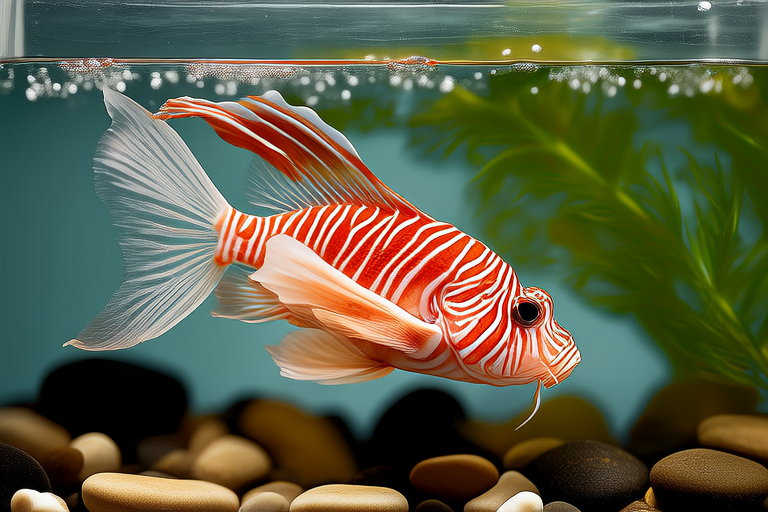
How to Make Your Goldfish Tank a Tropical Paradise
Welcome to the fascinating world of aquariums! If you’re considering transforming your goldfish tank into a tropical paradise, you’ve come to the right place. This guide will walk you through every step, from setting up the tank to maintaining it, ensuring your goldfish thrive in their new environment.
Step-by-Step Guide to Setting Up a Tropical Goldfish Tank
Creating a tropical paradise for your goldfish requires careful planning and execution. Here’s how to set up your tank:
- Select the Right Tank Size: Choose a tank that is at least 20 gallons for one goldfish. Larger tanks provide more swimming space and help maintain stable water conditions.
- Choose the Appropriate Filter: A good filter is crucial as it keeps the water clean and oxygenated. Look for a filter that can handle at least four times the volume of the tank per hour.
- Install Heating and Lighting: Goldfish are coldwater fish, but a heater can be used to keep the water temperature between 68-74°F (20-23°C). Use full-spectrum lighting to mimic natural sunlight, which is essential for plant growth.
- Add Substrate and Decorations: Select a substrate that won’t affect water chemistry. Decorative rocks, driftwood, and caves can enhance the aesthetic appeal and provide hiding spots.
- Introduce Plants: Live plants not only beautify the tank but also improve water quality by absorbing toxins. Suitable plants include Java Fern, Anubias, and Amazon Sword.
- Establish Beneficial Bacteria: Before adding fish, cycle the tank by running the filter continuously for about two weeks. Add a bacterial starter to accelerate the process.
Suitable Tropical Plants and Decorations
The choice of plants and decorations can transform your tank into a visually appealing tropical paradise. Consider the following:
- Plants: Opt for hardy, low-maintenance species like Java Moss, Cryptocoryne Wendtii, and Dwarf Sagittaria. These plants are less likely to be uprooted by active goldfish.
- Decorations: Enhance the tank with driftwood, decorative stones, and ceramic ornaments. These items add depth and interest, making the tank more inviting.
- Artificial Plants: If you prefer lower maintenance, artificial plants can serve as excellent alternatives. They require no trimming or fertilization.
Ideal Water Parameters for Goldfish Health
Maintaining proper water parameters is vital for your goldfish’s well-being. Key factors include:
- Temperature: Maintain the water temperature between 68-74°F (20-23°C).
- pH Levels: Aim for a pH range of 6.5 to 7.5.
- Ammonia and Nitrite: Keep ammonia and nitrite levels at zero.
- Nitrate: Monitor nitrate levels; they should be kept below 40 ppm.
- Oxygen: Ensure adequate oxygenation through filtration and aeration.
Tips for Maintaining Water Quality
Regular maintenance ensures your tank remains healthy and inviting. Follow these tips:
- Weekly Water Changes: Replace about 25% of the water each week to remove toxins.
- Monitor Water Chemistry: Regularly test water parameters and adjust as needed.
- Proper Filtration: Clean filters monthly to prevent clogging and ensure efficient operation.
- Use Water Conditioners: Treat tap water with conditioners to remove chlorine and heavy metals.
Feeding for Optimal Health
A balanced diet is crucial for your goldfish’s health. Feed them high-quality flake food, pellets, and occasional live or frozen foods like brine shrimp and daphnia. Avoid overfeeding, as excess food can degrade water quality. Feed small portions twice daily.
Common Pitfalls to Avoid
Creating a tropical goldfish tank involves avoiding several common mistakes:
- Overstocking: Do not overcrowd the tank, as this leads to poor water quality and stress.
- Inappropriate Plants: Avoid plants that can be easily uprooted or damaged by goldfish.
- Improper Heating: Goldfish are coldwater fish, so avoid overheating the tank.
- Lack of Maintenance: Neglecting regular cleaning and water changes can lead to health issues.
Conclusion
Transforming your goldfish tank into a tropical paradise is a rewarding endeavor. By following these guidelines, you’ll create an environment where your goldfish can thrive and flourish. Remember, the key to success lies in careful planning, regular maintenance, and attention to detail. Happy aquascaping!






